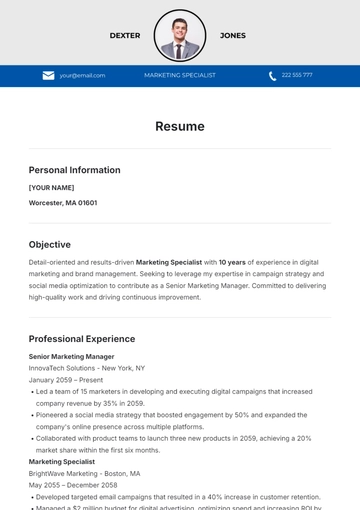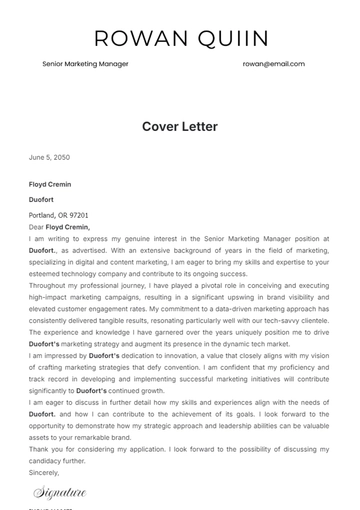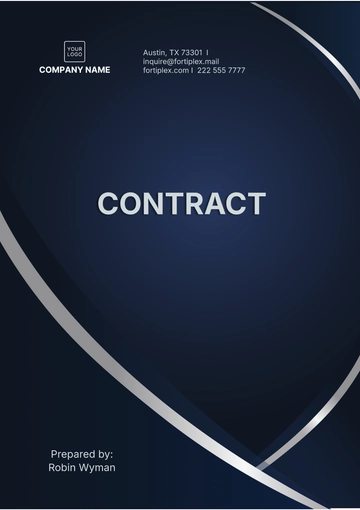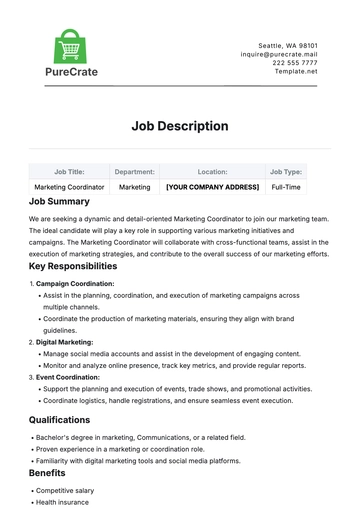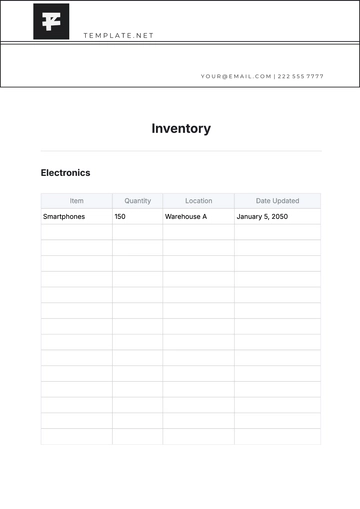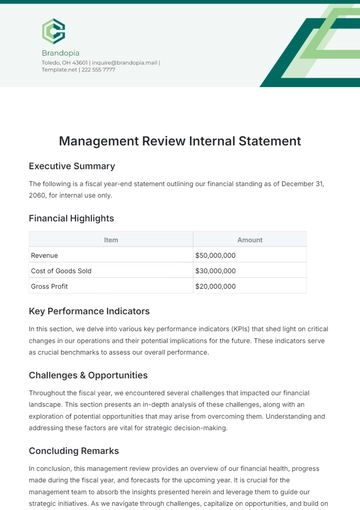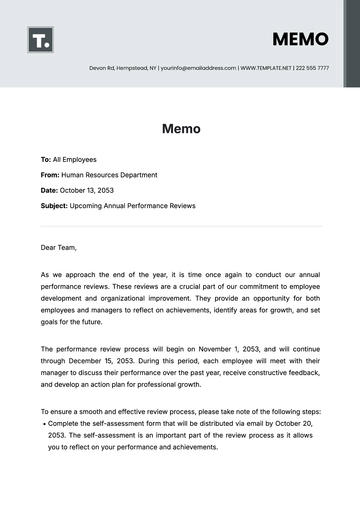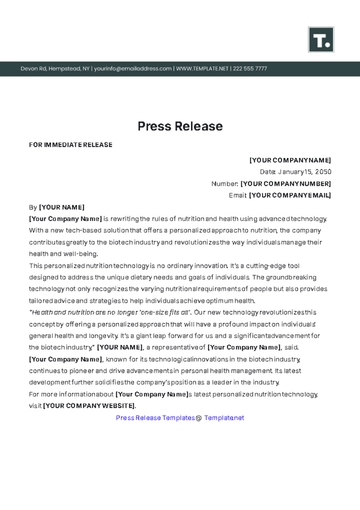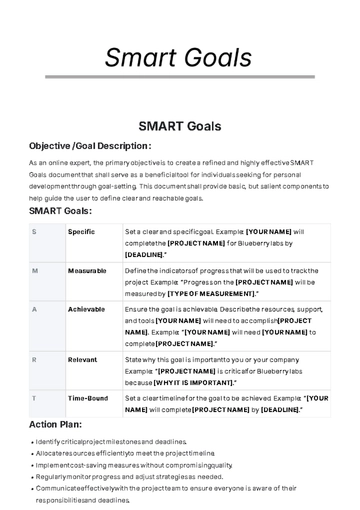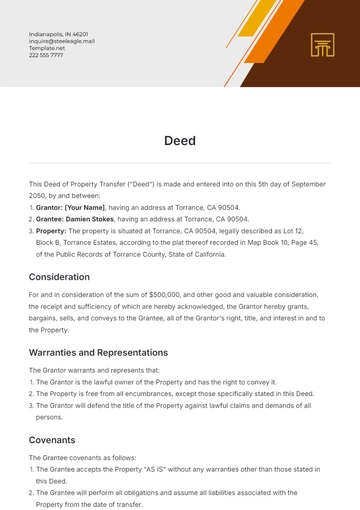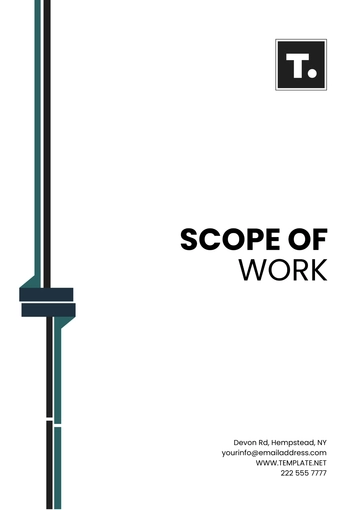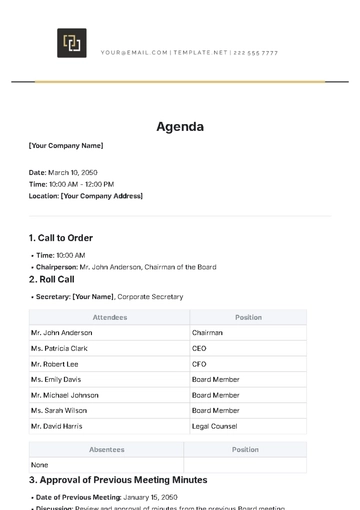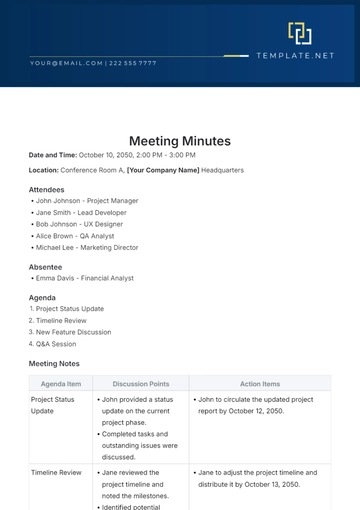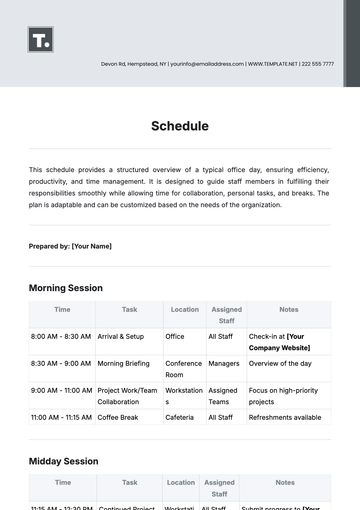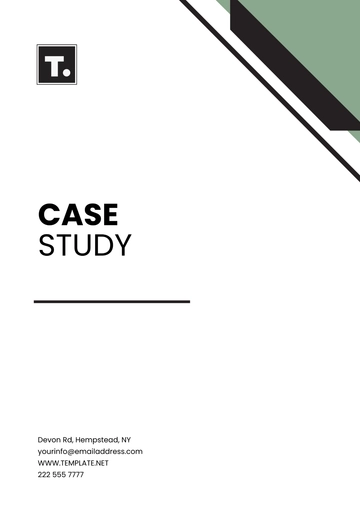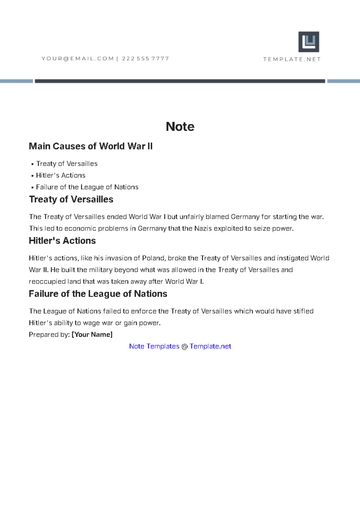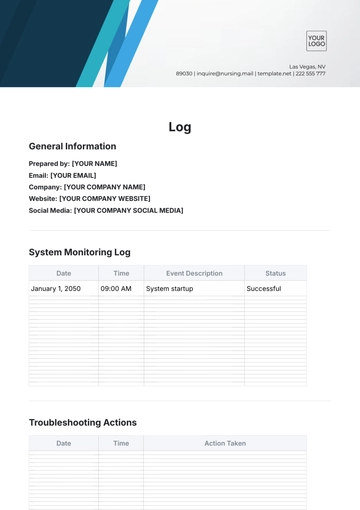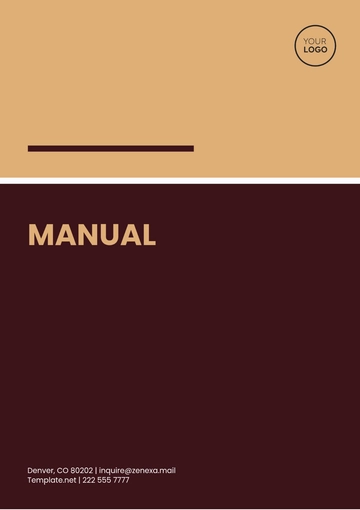Free Laboratory Protocol
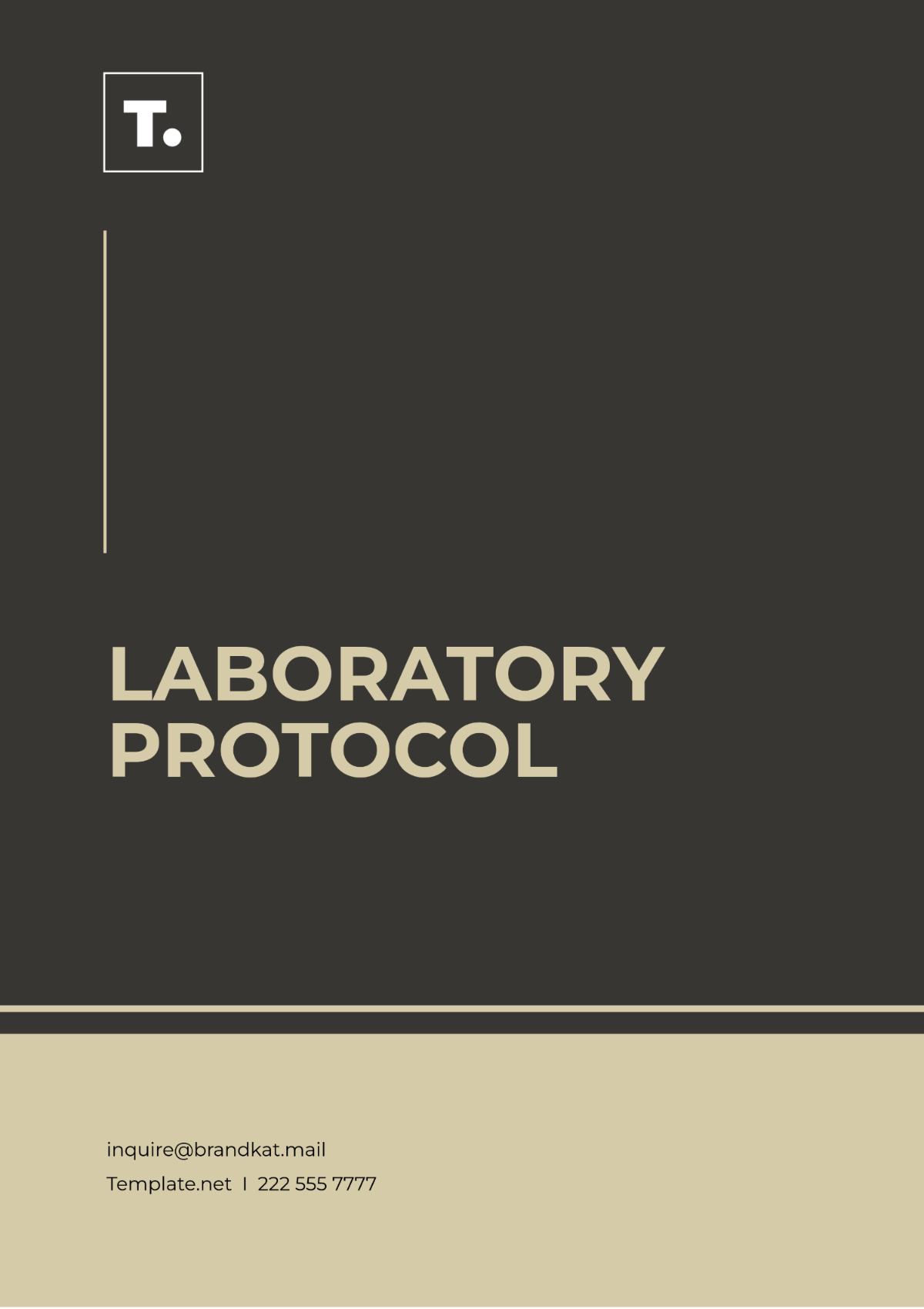
Name: | [Your Name] |
Contact: | [Your Company Name] |
Date: | June 15, 2050 |
1. Purpose
The primary objective of this Laboratory Protocol is to meticulously define and implement comprehensive guidelines and procedures governing the execution of experiments, testing, research endeavors, and analytical processes within our esteemed laboratory setting. By doing so, this protocol strives to maintain a steadfast commitment to consistency, unwavering reliability, stringent safety standards, and meticulous quality control across all facets of our laboratory operations.
2. Scope
This protocol meticulously delineates and encompasses a comprehensive array of crucial aspects of our laboratory's operational framework. It encompasses, but is not limited to:
2.1 Sample Handling
Precise protocols for acquiring, storing, transporting, and disposing of samples, ensuring integrity and accuracy throughout.
2.2 Equipment Usage
Detailed guidelines on the proper utilization, maintenance, calibration, and validation of laboratory equipment to uphold performance standards and data accuracy.
2.3 Safety Protocols
Robust safety measures, emergency procedures, hazard identification, and risk mitigation strategies to safeguard personnel, assets, and the environment.
2.4 Data Recording
Methodical approaches to record-keeping, data entry, validation, and archiving to ensure traceability, reproducibility, and regulatory compliance.
2.5 Analysis Procedures
Rigorous methodologies for conducting analyses, interpreting results, verifying accuracy, and validating outcomes to support reliable scientific conclusions.
2.6 Waste Management
Stringent protocols for waste segregation, disposal, recycling, and environmental stewardship in alignment with regulatory requirements and sustainability initiatives.
3. Responsibilities
3.1 Laboratory Management
Implementation Oversight: Supervise and ensure the effective implementation of this protocol across all laboratory operations.
Resource Provision: Allocate necessary resources, including equipment, materials, and personnel, to support protocol adherence and successful outcomes.
Training and Development: Conduct regular training sessions, workshops, and seminars to enhance the skills, knowledge, and competency of laboratory personnel in protocol compliance and best practices.
Regulatory Compliance: Stay abreast of and ensure strict adherence to relevant regulatory requirements, standards, guidelines, and legal frameworks governing laboratory activities.
3.2 Laboratory Personnel
Adherence to Guidelines: Thoroughly follow and adhere to the guidelines, procedures, and protocols outlined in this document during all laboratory activities and experiments.
Deviation Reporting: Promptly report any deviations, anomalies, incidents, or safety concerns encountered during the execution of laboratory protocols to designated authorities for immediate resolution and mitigation.
Workspace Maintenance: Maintain a hygienic, organized, and safe workspace by adhering to cleanliness protocols, proper waste disposal practices, equipment upkeep, and hazard awareness measures.
4. Procedure
4.1 Pre-Experiment Preparation
Resource Gathering: Procure all requisite materials, reagents, samples, and equipment necessary for the planned experiment or analysis.
Protocol and Safety Review: Thoroughly review and familiarize oneself with the experiment protocols, procedures, safety guidelines, and precautionary measures outlined in the protocol document to ensure meticulous planning and execution.
4.2 Experiment Execution
Protocol Adherence: Methodically follow the step-by-step procedures delineated in the protocol for conducting the experiment, testing, or analysis, ensuring precision, accuracy, and reproducibility of results.
Data Collection: Systematically record and document all relevant observations, measurements, data points, and experimental outcomes in a structured, organized manner, adhering to data recording protocols and standards.
4.3 Post-Experiment Procedures
Equipment Maintenance: Thoroughly clean, sanitize, and maintain all laboratory equipment and apparatus used during the experiment to prevent contamination, ensure functionality, and prolong equipment lifespan.
Workspace Hygiene: Clean and sanitize work areas, laboratory benches, and surfaces to uphold cleanliness standards, minimize cross-contamination risks, and promote a safe working environment.
Waste Management: Dispose of laboratory waste, including biological, chemical, and hazardous materials, under established protocols, regulatory guidelines, and environmental sustainability practices to mitigate environmental impact and ensure compliance.
5. Documentation
Detailed Record Keeping: Maintain comprehensive and detailed records of all experiments, tests, analyses, and research activities conducted within the laboratory.
Inclusive Content: Document essential information such as experiment protocols, procedures followed, materials used, equipment settings, environmental conditions, observations, measurements, calculations, results obtained, and any deviations encountered during the experimentation process.
Organized Structure: Organize and categorize documentation systematically, ensuring clear labeling, date/time stamps, experiment identifiers, and version control to facilitate easy retrieval, referencing, and tracking of information.
Accessibility and Retrieval: Ensure that all documented records are easily accessible to authorized personnel, securely stored in a centralized database or electronic system, and backed up regularly to prevent data loss and ensure continuity of information.
Review and Audit Preparation: Regularly review and update documentation to reflect the latest experimental procedures, outcomes, and findings. Prepare documentation for periodic internal reviews, audits, inspections, and regulatory assessments to demonstrate compliance, transparency, and accountability.
6. Training
6.1 Regular Training Sessions
Conduct periodic and structured training sessions for laboratory personnel to update them on protocol revisions, safety protocols, best practices, and the proper usage of equipment and tools within the laboratory setting.
6.2 Content Coverage
Ensure that training sessions cover a wide range of topics, including but not limited to:
Updates to laboratory protocols, procedures, and guidelines.
Safety measures, hazard identification, and emergency response protocols.
Proper handling, calibration, maintenance, and troubleshooting of laboratory equipment.
Regulatory compliance requirements, ethical standards, and quality assurance practices.
6.3 Documentation of Training
Maintain accurate and up-to-date records of all training sessions conducted, including attendance logs, training materials used, topics covered, assessments conducted, and feedback received from participants.
6.4 Competency Assessment
Implement competency assessment mechanisms, such as practical demonstrations, quizzes, and skill evaluations, to ensure that laboratory personnel are adequately trained, competent, and proficient in their assigned roles and responsibilities.
6.5 Continuous Improvement
Seek feedback from participants to identify areas for improvement in training programs and materials. Regularly review and update training content based on evolving best practices, industry standards, regulatory changes, and feedback from stakeholders.
7. Conclusion
Through strict adherence to this Laboratory Protocol, our laboratory endeavors to maintain unparalleled standards of excellence, ensuring the utmost quality, safety, and regulatory compliance in all operational facets. Your unwavering dedication to upholding these guidelines is paramount in safeguarding the success, integrity, and reputation of our scientific pursuits.
- 100% Customizable, free editor
- Access 1 Million+ Templates, photo’s & graphics
- Download or share as a template
- Click and replace photos, graphics, text, backgrounds
- Resize, crop, AI write & more
- Access advanced editor
Optimize laboratory processes with Template.net's versatile and editable protocols. Customizable for various experiments and procedures, our protocols ensure efficiency and accuracy in laboratory workflows. Integrated into our AI Editor Tool, managing and updating protocols is simplified, enabling smooth and streamlined laboratory operations across different scientific disciplines and research areas.
You may also like
Free
Free CV Template

- Resume
- Cover Letter
- Report
- Budget
- Lesson Plan
- Itinerary
- Resignation Letter
- Letter
- Job Description
- To Do List
- CV
- Proposal
- Business Plan
- Checklist
- List
- Smart Goal
- Executive Summary
- Agenda
- Analysis
- Press Release
- Memo
- Note
- Action Plans
- Script
- Essay
- Brief
- Syllabus
- Tracker
- Contract
- Agreement
- Bill of Sale
- Case Study
- White Paper
- Statement
- Will
- Deed
- Notice
- Scope of Work
